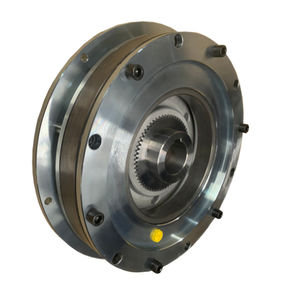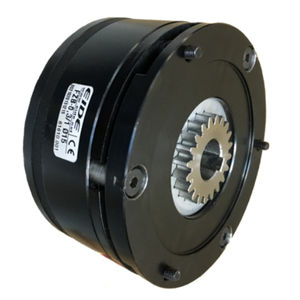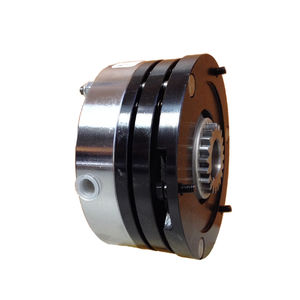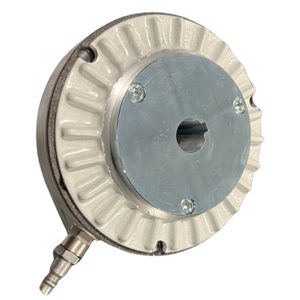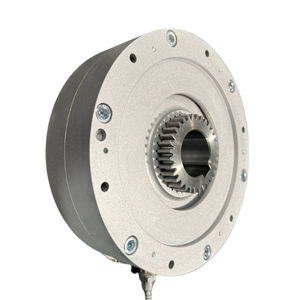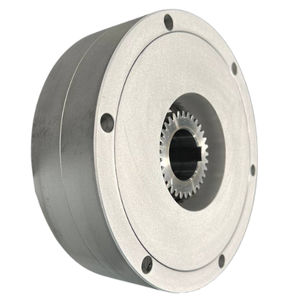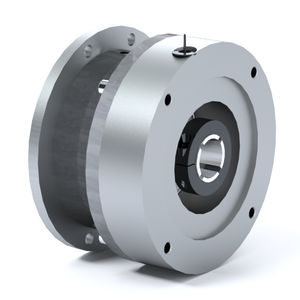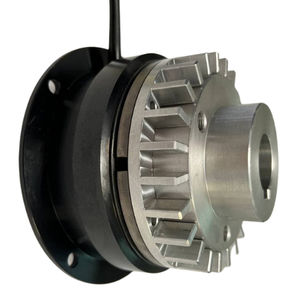
- Company
- Products
- Catalogs
- News & Trends
- Exhibitions
Safety brake ECcentrifugalmechanicalfailsafe
Add to favorites
Compare this product
Characteristics
- Type
- centrifugal
- Operation
- mechanical
- Other characteristics
- safety, failsafe, shaft-mounted, bi-directional, emergency, for motors, for conveyor, for wind turbine, for elevators, for hoists
- Torque
45 Nm, 130 Nm, 260 Nm
(33.1903 ft.lb, 95.8831 ft.lb, 191.7662 ft.lb)- Rotational speed
Min.: 0 rpm
(0 rad.min-1)Max.: 15,000 rpm
(94,247.78 rad.min-1)- Power
4,500 W, 12,000 W, 24,000 W
Description
Its operating principle is centrifugal force, by increasing the speed of rotation, the masses overcome the force of the springs and rub against the static drum until it reaches a speed where the torque exerted by the centrifugal force and the torque exerted by the weight are balanced, maintaining that speed until the end of the route.
EC centrifugal brakes take advantage of centrifugal force to limit speed, therefore, as they do not require any external power supply, they are the perfect solution for safety applications.
The external part of the EC brake is painted to create a protective barrier that prevents the appearance of rust and isolates the steel from any environmental conditions.
The most common assembly of the EC centrifugal brake is between the motor and the gearbox with standardized IEC B5 flanges and shafts, although it can also be custom-made for any application.
EC Centrifugal Brakes are designed for applications where the rated speed is 1000, 1500 or 1800 rpm.
In the event of motorization or motor brake failure, the EC brake is activated and controls the lowering of the load.
Centrifugal brake is mounted on the mast climbing work platforms (MCWPs) to comply with the safety section of the EN 1495 standard.
Another common application for the EC brake is industrial hoists or elevators used on building construction sites or in the small elevators of people that are inside the wind towers or tower cranes.
Features:
Standards flanges and shafts.
With or without drums.
High protection.
Applications:
Construction hoist
Renewable energy
Cleaning buildings and façades
Catalogs
EC
2 Pages
Related Searches
- Flexible shaft coupling
- Shafts coupling
- Friction brake
- Spring brake
- Disc brake
- Electromagnetic brake
- Friction clutch
- Sleeve shaft coupling
- Misalignment correction shaft coupling
- Overload clutch
- Electromagnetic clutch
- Hydraulic brake
- Safety brake
- Maintenance-free shaft coupling
- Pneumatic brake
- Disc clutch
- Machines coupling
- Emergency brake
- Spring activated brake
- Torsionally rigid shaft coupling
*Prices are pre-tax. They exclude delivery charges and customs duties and do not include additional charges for installation or activation options. Prices are indicative only and may vary by country, with changes to the cost of raw materials and exchange rates.







